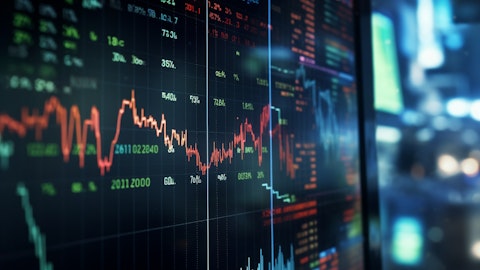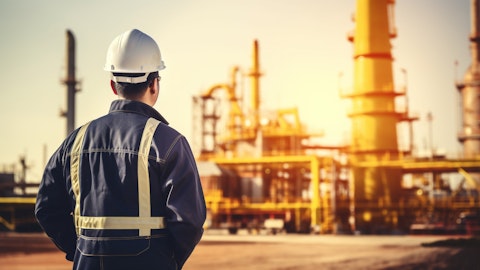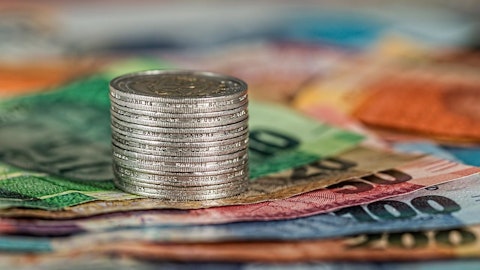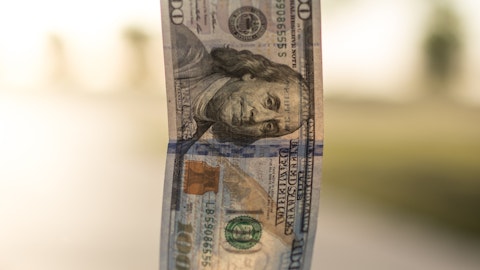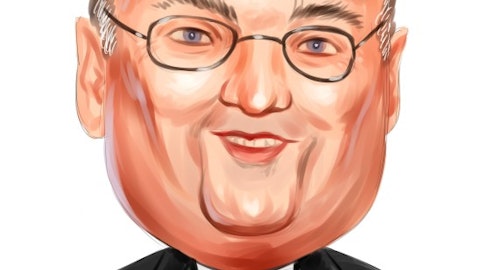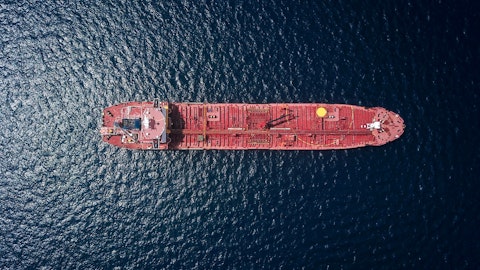So, it’s so our eyes are always open and we’re looking for opportunities. In terms of the second part of your question about other segments, we’re a tanker company. We’ve been in tankers since we were formed in 2007, and that is where our focus is. If we end up in a situation where we have a lot of capital to deploy and tankers and there isn’t the window isn’t open for tankers, but there’s other opportunities in other segments, then of course, as a company, we would consider wherever we can create shareholder value. But we are a tanker company and that’s what we’ve been focused on. And at the moment, there’s no intention to pivot away from that.
Omar Nokta: I just was wondering if perhaps maybe the reason why we haven’t seen the reinvestment is perhaps thinking a bit more strategically outside of tankers. And I guess at what point do you think as you highlighted at the end of the quarter you’ll pay off the capital leases, the cash is going to start to really accrue fairly rapidly in the next few quarters assuming obviously the market remains afloat. And as you highlighted, do you think it can last couple two years or three years? Is there a point at which point you start to think while the cash is building too much, we need to now move this? Is that have you thought about that? And is there sort of like a cash balance trigger that really starts to make you think, okay, we have to put this capital to work?
Stewart Andrade: I don’t think that there’s, I don’t think there is any trigger. First of all, let’s say that I don’t think there is a number or a trigger. And when we put in the capital allocation our capital allocation approach, which was a sustainable quarterly dividend, which given our transformed balance sheet, we thought we would be able to continue to pay for the long-term and then the flexibility to pay special dividends when deemed appropriate. We did that for that exact reason. So, we could be flexible and we could make large returns of capital or small returns of capital depending on the position of the company and how we saw our prospects going forward. So, the situation that we’re in now is we as you said, we’re generating a lot of cash flow, which at the end of the day is equity value for shareholders.
And as we’ve seen in the last year, quite a bit of that equity value has been has come through in terms of our share price. And we’ve got we had over 100% total shareholder return during 2023. During 2022, it was even larger than that. So, we feel like that equity value has been realized in terms of our share price. But then the question becomes, well, what do we do with that cash flow or that equity value and how do we best deploy that to create value for our shareholders? And that’s the conversations that we have. Should we return a certain amount to shareholders via direct capital return? Or do we think we’ll create more value by having that financial strength that we can reinvest at the right time to create even more value? So that’s really the basis of the conversations that we have.
And as you rightfully note, as if this market stays strong for the next two years, TNK will be in a much different position than we are today. And I would expect the conversations that we have around the capital allocation would be informed by that changing nature of our balance sheet. And again, we will use the same criteria, which is how do we create value for our shareholders, but the answers might be different as we move forward.
Omar Nokta: That is a great situation to be in, nonetheless. So yes, I appreciate those comments. And If I could just ask one quick one just on the market. Kevin, you were sort of highlighting the Trans Mountain pipeline and just want to get a sense from you, does this you mentioned the 30, 35 Aframax loadings. Is this a brand-new trade pattern that can start to evolve? Or is there already a market for Aframaxes in that region? And where do those cargos you think end up going?
Kevin Mackay: Yes. It’s a good question. At the moment, you have approximately one Aframax lifting a week. So, it really is a significant uplift in export capacity. There’s various markets that that crude can move into. It can move down to the U.S. West Coast. It can move down to Panama to be put on VLCCs or co-loaded to send to a further over to Asia. It may even be put through the Panama Canal. At this point in time, we don’t know. All we know is that the operator is indicating that the pipeline will open and have oil flow at some point in second quarter of this year. But in terms of the destinations of those cargoes, we’ll have to wait and see how the trading or the oil trading environment picks up on that oil and where they can probably make the best bar engine.
So, the only sure thing is that you can only load an Aframax out of Vancouver. You can’t take a Suezmax or a VLCC in there. So, from a demand perspective, it’s a really exciting area that we’re really keen to keep an eye on. And it could bode well with our capacity that we have currently in the U.S. Gulf and with our Suezmax fleet also trading around that area, it could move a really good dynamic for the midsize tanker space overall.
